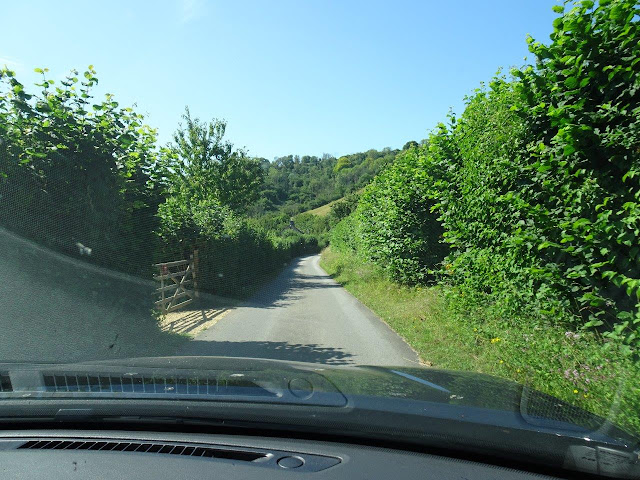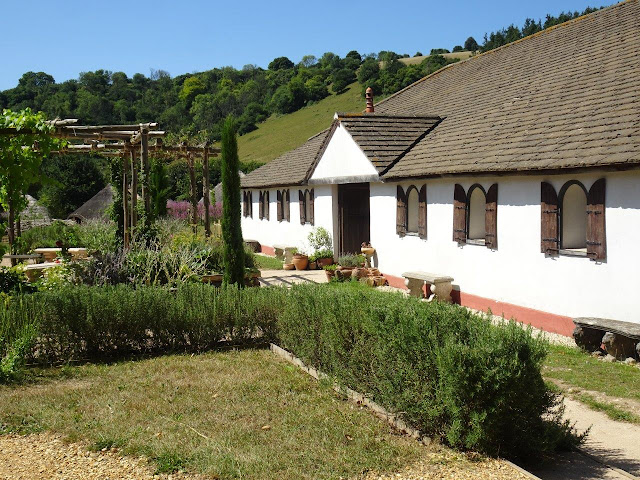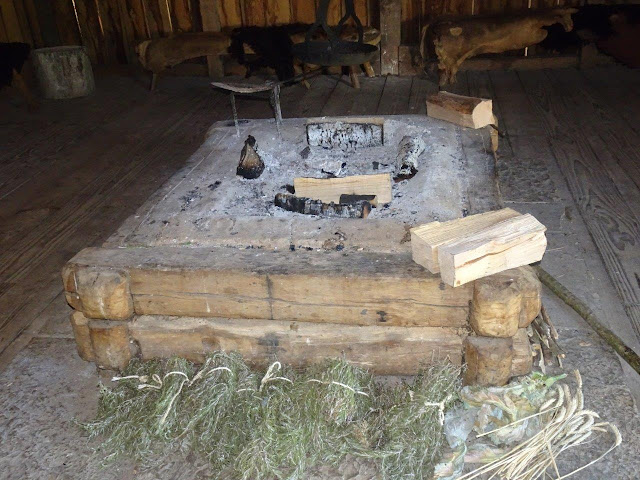This archeological reconstruction of a working ancient farm is near Peterfield, in Hampshire, focusing on Neolithic, Roman, and Saxon life. It is really not far from Salisbury and area of the stone henges, so it was a short drive. As is typical, however, getting up the driveway was a challenge!
There was a nice visitor center with gifts and snacks, however. Best part was a sheltered porch to sit out of the sun and wind.
Here is more information about this non-profit organization and its goals of research into ancient Britain: https://www.butserancientfarm.co.uk/about-us (This is a very interesting institution, so please do read about it and its history.)
There were three Ph.D. students there giving talks about some of their personal areas of research, by the way.
The first display was this tiny very early hut that provided only a bit of shelter.
On to some much more sophisticated round houses that were common in pre-Roman Britain, that included the era below and some of the neolithic era--the time period when Stonehenge and the dwellings in area near it were believed to be constructed. No one is 100% sure how these looked, but they are based on holes found by researchers for the posts that provided their support.
This small "village" of round houses is often used by volunteers to teach ancient skills, like weaving and tool-making. There were two small groups working on this day.
This rough weaving was demonstrated how it might have been done with animal fur, possibly rabbit and sheep.
This was a larger and slightly more sophisticated rectangular house, which would have been built just before Roman times.
Next was a structure and garden area from the Roman period. It was made of stone and bricks and would have had tile flooring and a tile roof.

Notice that they also had boards in this period, so must have had sawmills. Being able to use slices of logs instead of the entire logs was important in an era when Britain was beginning to be deforested and more farms were established.
Detail of a part of the roof.
This is a Saxon house. The Saxon period begins when the Romans left (about 400 AD) until the Norman Invasion in 1066.
Some photos of this Saxon home. They were doing a demonstration on how to skin and butcher a deer in one, so I could not take photographs there, but there was another such house nearby. Note the arrangement of the central fireplace with seating benches and beds along the sides of the house. This was a very large structure and could also have been used as a community structure.
Notice that they still had boards, but that their construction was rougher than the Romans, who were known for being builders.
They would have also cooked on this hearth.
By this time, they were making yarn from various plants and animal wool, and produced clothing.
Also notice that the sub-roof was made of woven sticks, with the thatch on top of that.
Grabbed a carton of ice cream and a pastry, plus a Coke and was off to my hotel, which thankfully will have air conditioning!!! Yea!




























No comments:
Post a Comment